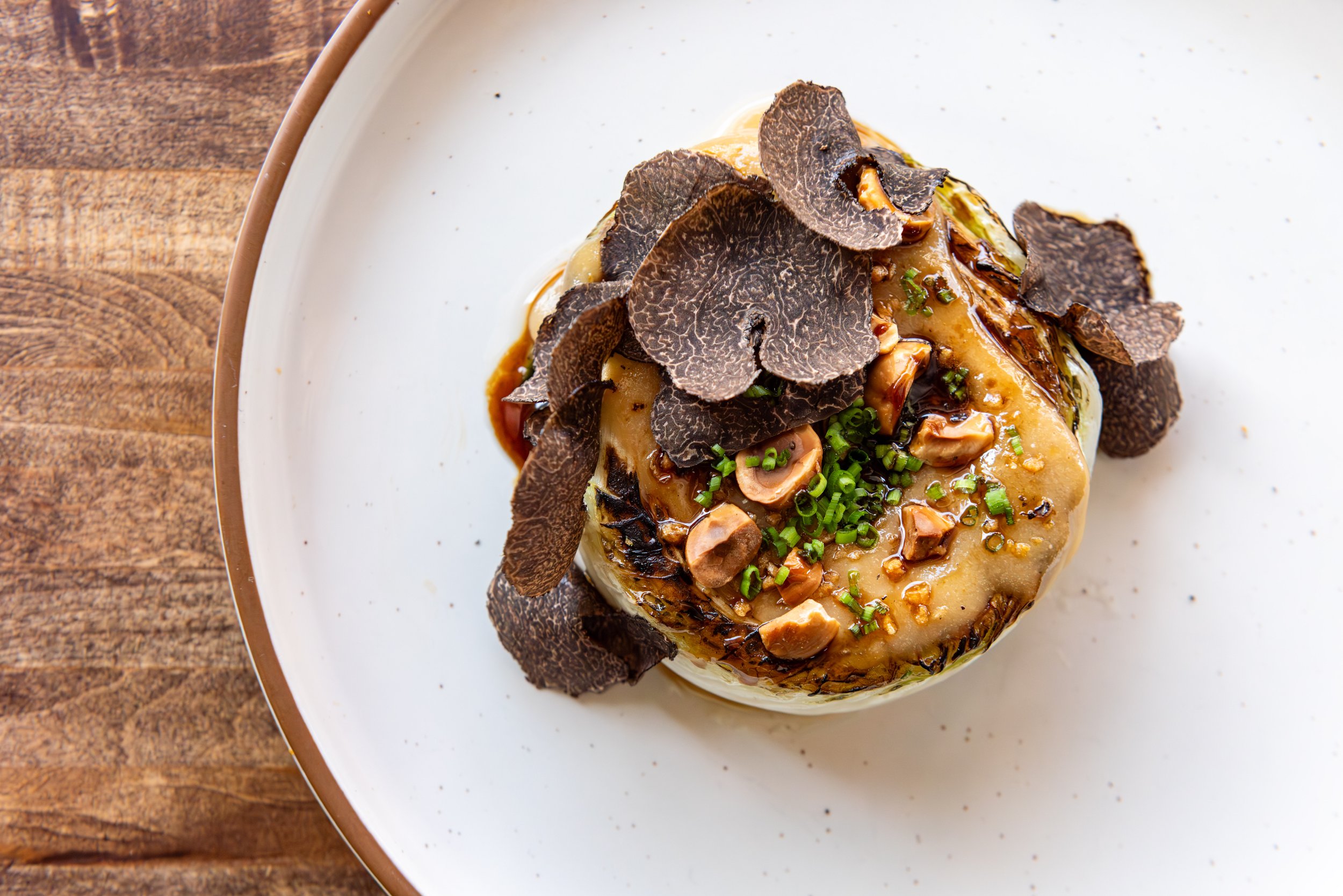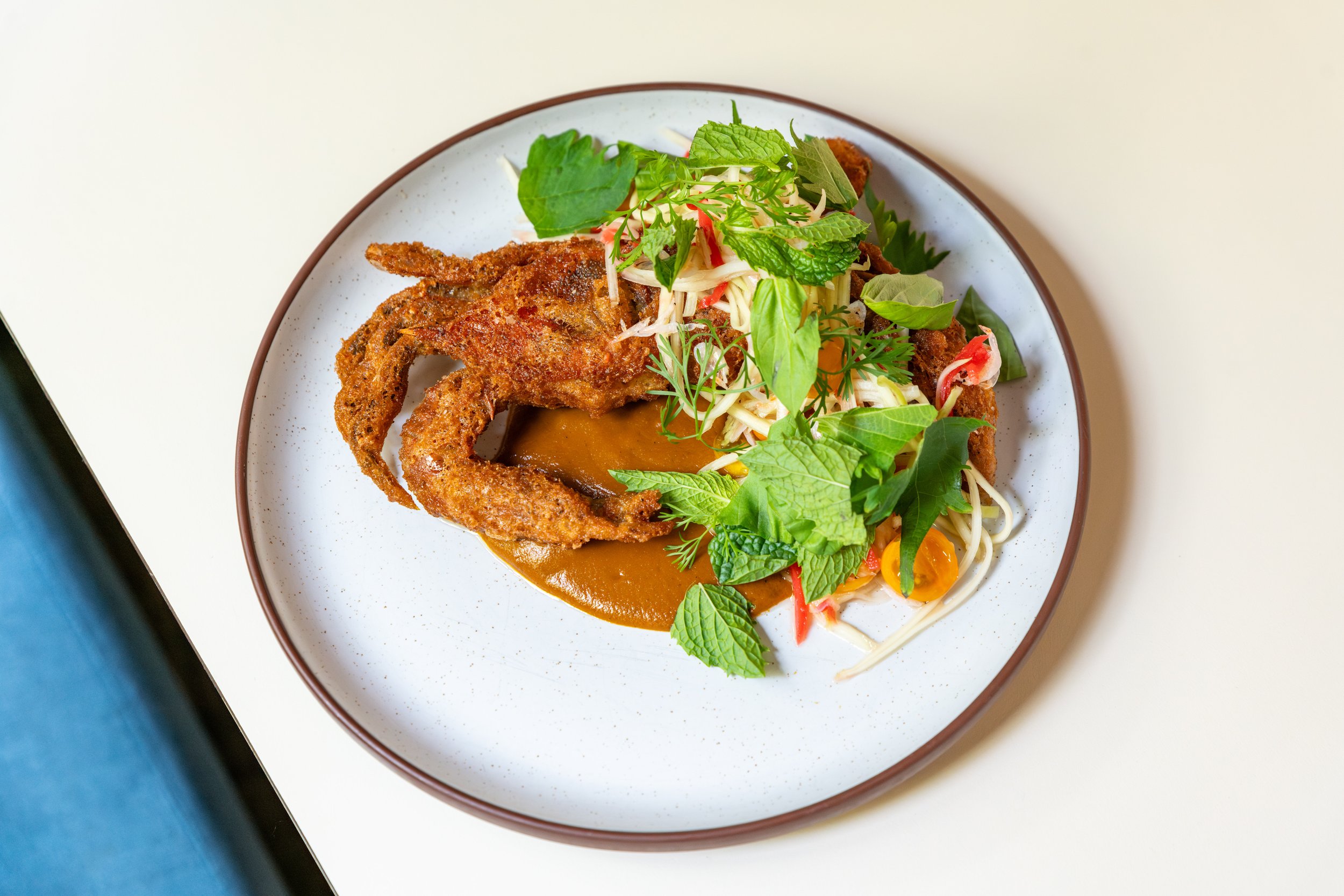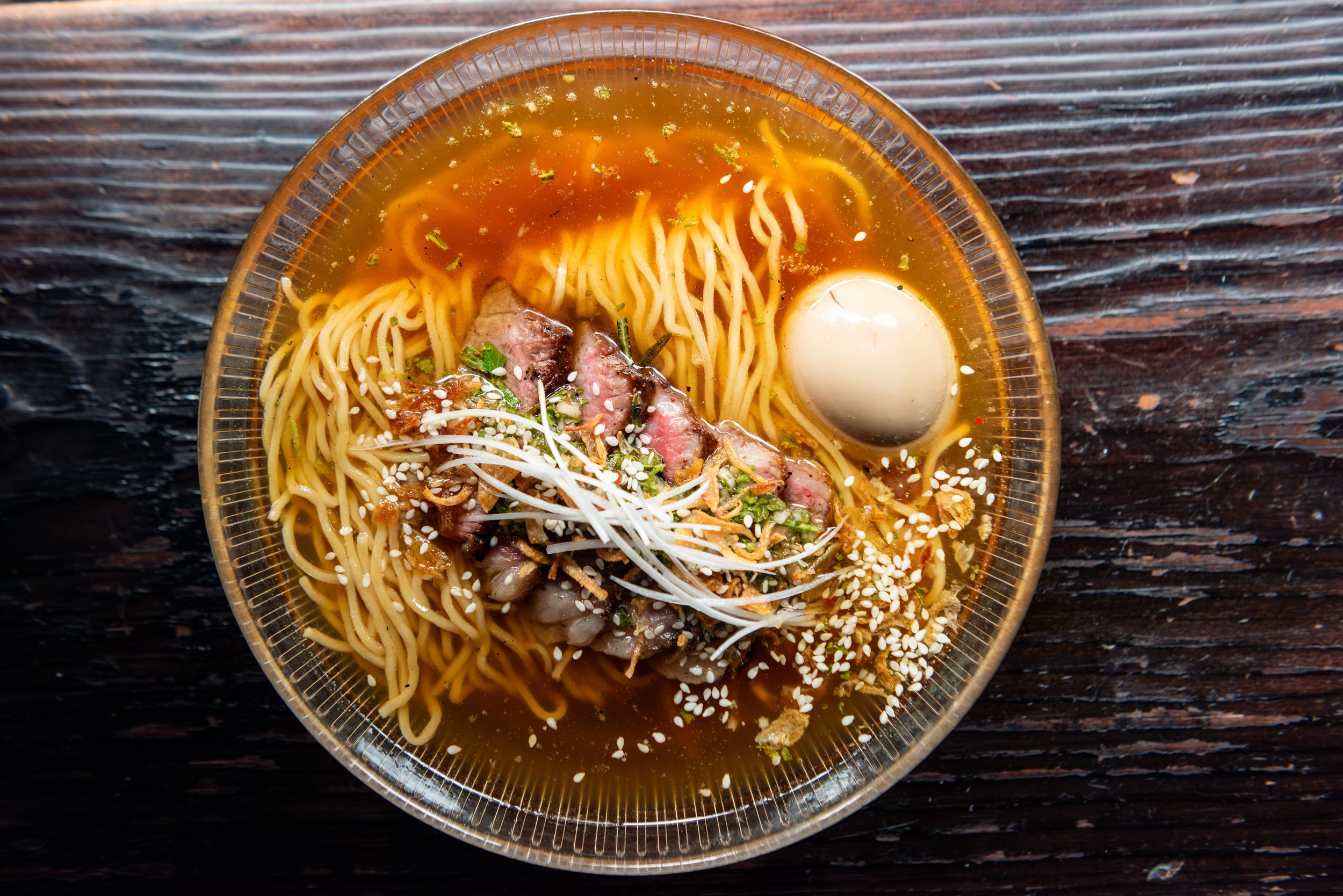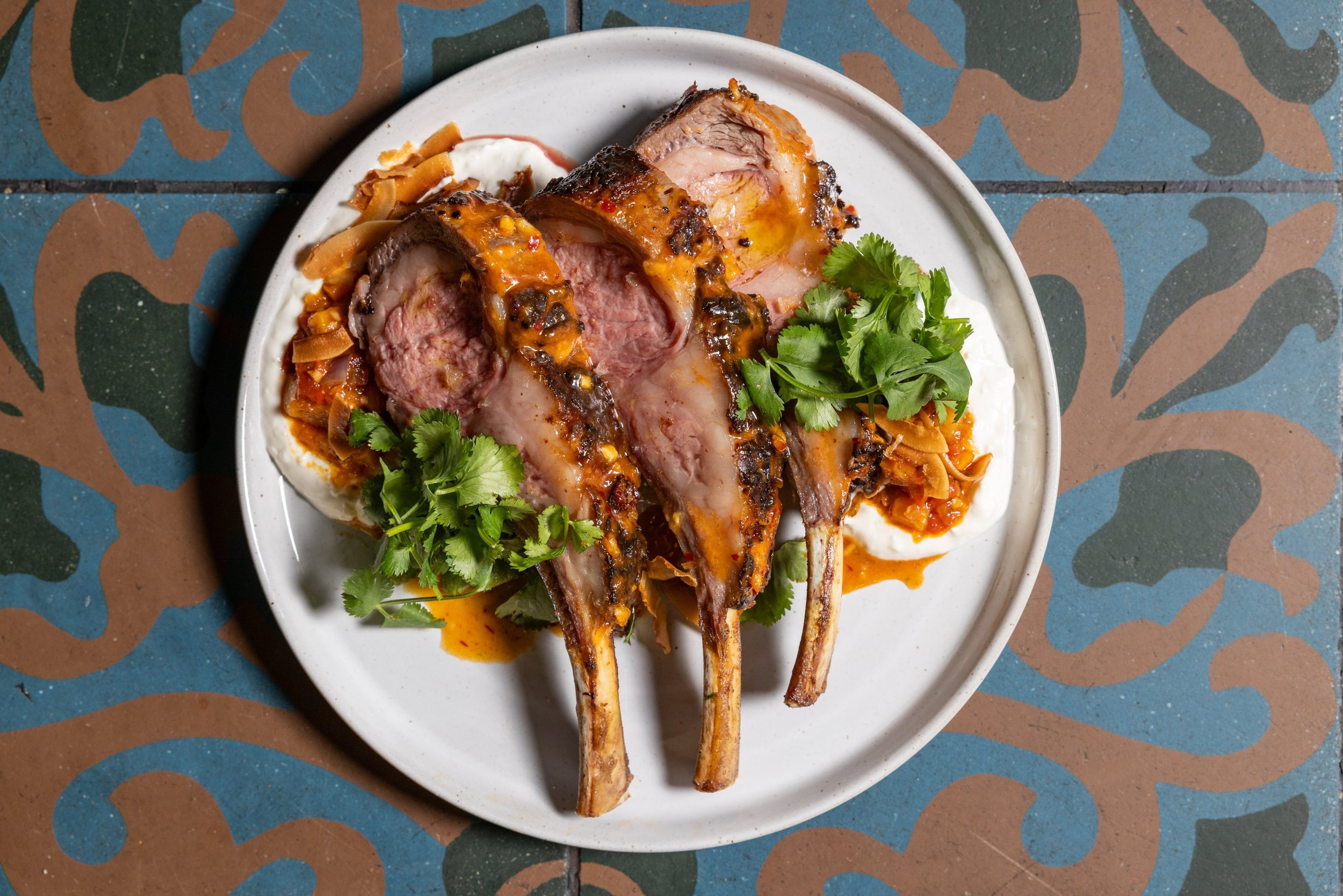It's Rarebit Season!
Chefs Kate and Trevor Smith make a humble meal of cheese on toast become a luxe, seasonal vegetable dish at Thistle & Leek.
Photo: Will Blunt
In Newton, Massachusetts, Chef-Owners Kate and Trevor Smith have found a way to bring their passion for European flavors, techniques, and ingredients to the Boston suburbs.
Their cozy, refined gastropub Thistle & Leek—nestled comfortably on Union Street in Newton’s Piccadilly Square— has become a neighborhood favorite with dishes that embrace seasonality and bring a fresh perspective to traditional English pub fare. This past winter, with bitter cold New England winds raging against the windows of the restaurant, Kate and Trevor turned to a warming, hearty, and humble classic: Welsh rarebit. First recorded as Welsh rabbit in 1725, the dish was crudely named at the expense of the Welsh peasantry who, unable to afford meat products, relied on cheese as a filling substitution, or so the story goes. By 1785, Welsh rabbit had turned into Welsh rarebit as the result of a miscommunication, or in an effort to make the dish sound more refined and less confusing to unfamiliar diners. At Thistle & Leek, the charming plate of cheese on toast got a vegetable-forward spin, when the rich, savory sauce found its way onto a piece of tender, roasted cabbage. Balancing tradition and invention, Kate and Trevor’s cabbage rarebit delivers on nostalgia and comfort while bringing sophistication and refinement to the table.
Roasted Cabbage
“I had been pushing for rarebit on the menu, I love rarebit,” says Kate, but “as much as we are a gastropub, an English pub, we don't want to do a traditional thing.” So, when they got their hands on Napa cabbage from Allandale Farm, Trevor knew the rarebit didn’t have to be on toast at all. “Cabbage,” says Trevor, “in all of its glory, seemed like a beautiful vehicle.” The cabbage is cut into wedges, boiled in salt water for 90 seconds, and plunged into ice water, developing a slightly softened texture without compromising the brassica’s tender crunch. “We want [vegetables] to stand on their own,” says Kate, and be “as savory, exciting, and filling as meat and fish” dishes. After it’s dried out, the blanched cabbage is seared on the plancha, where it develops a dark crust as the natural sugars caramelize and char.
Rarebit Sauce
After several years living in London and working at The Vineyard at Stockcross under Chef John Campbell, Trevor has a familiarity with and love for traditional English cuisine. In particular, Fergus Henderson’s The Book of St. John has been “a massive inspiration in many ways,” says Trevor. Using Henderson’s rarebit recipe as a jumping-off point, the sauce at Thistle & Leek starts with melted butter, flour, and mustard powder before stout beer is added to the mixture in batches and cooked until thickened. Rarebit “has some origin in Mornay sauce, but instead of bechamel you are making a velouté with beer,” Trevor adds. Removed from the heat, Cabot Clothbound cheddar from Jasper Hill Farm is folded into the mixture. The cheese is “a little more dry and packs a punch. It’s nutty, sweet, and umami. It has all the components you need to make that sauce stand out,” says Kate, who had a chance to see the aging process of the cheese firsthand while working at Formaggio Kitchen. The oozy, “unctuous” rarebit sauce is transferred to a sheet tray to set before it’s sliced, draped over the seared cabbage, and broiled until melted.
Worcestershire Glaze
Noticeably absent from the rarebit sauce is Worcestershire. Typical in most traditional recipes, Trevor and Kate opted instead to incorporate the anchovy-based condiment in the form of an umami-rich glaze made of equal parts Worcestershire sauce and honey. “In a traditional English pub, you get a bottle of Worcestershire with your rarebit,” says Trevor, “like ketchup and fries, here. So, having that condiment, not on the table, but a little touch of it [in the dish], definitely brought it together.” The Worcestershire glaze is drizzled over the rarebit, where it “echoes the caramelization of the cabbage” and “helps the flavor come in layers.”
Hazelnuts, Chives, and Truffles
Leaning into the winter season and doubling down on the decadence of rarebit, Kate and Trevor garnish the cabbage with shaved truffles and toasted hazelnuts to bring an earthy, elegant edge and dynamic texture to the dish. “Texture is something you need to always look at,” says Trevor. “The cabbage has some crunch to it, but it's been softened and caramelized. Something crunchy is essential.” Some last minute chives add freshness and “green brightness” to the dish and help bring balance. The simple yet powerful additions— reserved and intentional—transform the modest pub dish into a celebration-worthy plate that has once-hesitant guests suddenly craving seconds.







